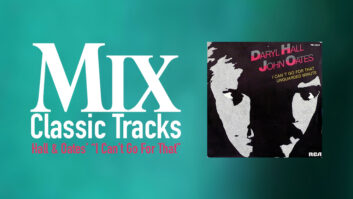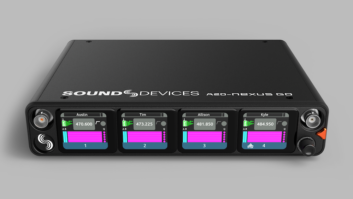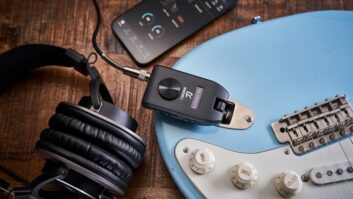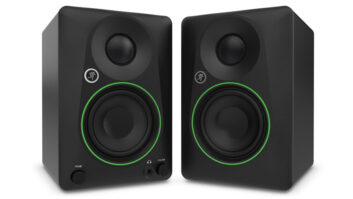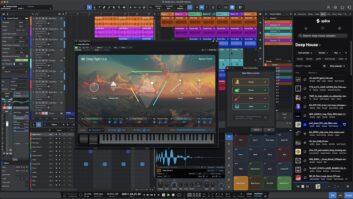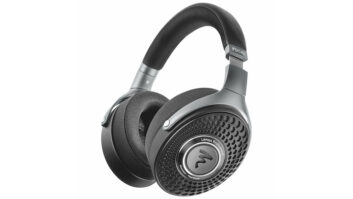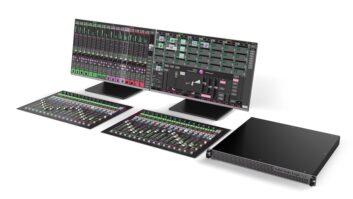
Encino, CA (July 6, 2020)—Nick Anderson, frontman of The Wrecks and the band’s principal songwriter and producer, is still learning the nuts and bolts of engineering, but given half a chance, he’ll simply pull out an iPhone to record the drums for a song. It’s fresh, it’s different and it’s given the pop-punk band’s first full-length, Infinitely Ordinary, a distinctive edge not heard on their more polished early EPs.
Anderson has been producing since he was 14—the band members are all in their 20s—when he would work in GarageBand on the iMac at his dad’s workplace in rural New York. “He used to give me a key to his office and I’d go after people left for the day and stay there until three or four in the morning,” he says.
When the band, which formed in 2015 in Thousand Oaks, CA, recorded its first two releases, Anderson leaned heavily on Andrew D’Angelo, the group’s FOH engineer. “At the time, my job was to make things just sound good,” says D’Angelo. “I had only made a record under the guidance of the guy I was working for, so we found ourselves in the studio pulling from what we knew to be true.”
Indie Band’s Tour Sound Ready to Wreck and Roll
Those first recordings were almost too perfect. “We sat there and spent a long time editing everything on the grid—not realizing we didn’t have to,” says D’Angelo. On the new record, “Nick wanted to go with a dirtier sound. I had to force myself into it.”
That said, he now approves the choice. “On one of the vocals, I put a high cut on at 10k. Nick said, ‘Perfect.’ I hated it. But listening back, I can appreciate it for what it is.”
Over the course of those first releases and the subsequent production of more than two-dozen songs in a studio in a barn near his hometown a couple of years ago, Anderson honed his chops. “At the time, I was really dependent on Andrew to create music that was ready to release, so there was a learning curve for me.”
He’s long since graduated to Pro Tools, but the setup at his home in L.A.’s San Fernando Valley is still relatively minimal. “I don’t have a lot of outboard gear,” says Anderson. “When I moved into my place in Encino, I was able to keep practicing, working in the studio every single day until I wasn’t entirely dependent on someone to make it commercially ready. I got more comfortable with what I was producing, and I knew that with a decent mix, we would be able to use these recordings.”
D’Angelo mixed “This Life I Have” immediately after the brief tracking session, and Chris Lord-Alge put his stamp on “Freaking Out” (both are from the barn recordings). The rest of the album was mixed by Pat DiCenso. “He was super quick and did a fantastic job. He’s someone I’ll continue to work with,” says Anderson, who was happy to hand over the tracks. “I believe mixing is a science.”
Anderson regularly works with guitarist Nick “Schmizz” Schmidt on The Wrecks’ songs. “He and I make all the music, from the writing to the recording. He’s got more of a rock brain; I’ve got more of a pop nature.”
He also produces and collaborates with other artists, mainly on the songwriting side. One day, eager to quickly track some percussion, he used his iPhone. “The iPhone microphone has a really nice compressor. Since then, I’ll put an iPhone in front of an entire drum kit,” he says.
“I’ll have a kit set up then pull out an iPhone and have someone play a beat, pull it into Pro Tools and put samples over the kick and snare. Then you’ve got this really cool and trashy but full and punchy kit. And you can do it without miking up a drum kit. Don’t get me wrong, it’s peaking the entire time, but you’re using it mostly for the room sound. And it’s allowed me to do things quickly.”
When D’Angelo tracks drums, he favors Shure KSM44 dual-diaphragm mics on toms. “When you put them on the rim of a tom, it’s so clear and there’s so much smack. The only tradeoff is that you get absurd amounts of bleed,” says D’Angelo, so positioning for rejection is critical. To allow the final tom hit of a fill to ring out, he’ll paste in a sample. “You get super clean drums that ring out for days,” he says.
Equally key to the sound, he adds, is drummer Billy Nally’s Australian-made Sleishman kit, which features free-floating heads. “It sounds like it’s going through compression; it’s the best sounding drum kit ever,” says D’Angelo.
Other than that, he says, Neumann U 87s on overheads, a few Neve 1073s and Universal Audio 4-710d mic preamps, with variable tube drive, all played their parts in the sound. “We drove the crap out of the room mics. And we used 1176s for days,” he reports.
Few songs feature a full kit of live drums and some songs have none, although you would never know it. “We’ll have Billy riff through the song a few times, so we have a good comp. Then we’ll have him play the whole song but not hit the snare, or just play the fills, or just the hat. I have him play the parts separately so that I can affect those parts of the drum kit separately.”
“Fvck Somebody,” a demo that Anderson wrote with his friend Savannah Bleu that made it to the album, has no live drums. “The vocals and guitar and programmed drums that happened that day were so right for the song that I essentially had the demo mixed,” he says.
“The only thing I replaced were the rhythm guitars because they were out of tune; I was just excited to get the song finished. I recorded the vocals on a $100 [Blue Microphones] Bluebird mic. My room had no sound treatment, so you can hear the room in the vocals.”
If D’Angelo had engineered the record, it probably would have been a lot cleaner, Anderson admits, but producing it himself has given the album a sonic character that helps it stand out from the crowd. “It was the product of taking a couple of years of figuring out my identity as a producer,” he says, “and our identity as a band.”
The Wrecks • www.wearethewrecks.com

